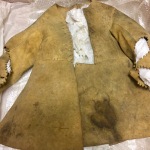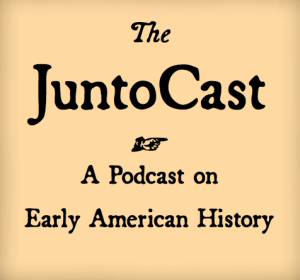Welcome to Founding Fiction, The Junto’s first roundtable exploring how children’s literature and young adult fiction depicts early American history. Between posts, we’ll compile a shelf of favorites to (re)read. Tweet us at #FoundingFiction or comment with your recommendations for Very Early Americanists. Happy summer, let’s dive in!
Today’s post is by Laura Ansley, Ph.D. candidate in history at the College of William & Mary, and managing editor of the Nursing Clio blog. Her dissertation is titled, “Life Problems: Sex Education in the United States, 1890-1930.” Follow her @lmansley.
Phillis Wheatley and Abigail Adams and Peggy Shippen and Harriet Hemings: all early American women whom I learned about from Ann Rinaldi’s young adult fiction. I have been fascinated by history for as long as I can remember, but Rinaldi was one of many authors who helped me to better understand what the best kind of historical study is. While school classes covering the Civil War may have talked about generals and battles, Rinaldi introduced me to characters like Osceola, stepdaughter of Wilmer McLean, who moved his family away from Manassas when the war came to the quieter Appomattox Courthouse—meaning the war started and ended on their doorstep. With her focus on teenage heroines, Rinaldi showed that history wasn’t only about important men. Young women experienced these historical events too, and their stories were also worth telling.
Continue reading




 We’re happy to bring you the fifteenth episode of “The JuntoCast.”
We’re happy to bring you the fifteenth episode of “The JuntoCast.”  On to the links!
On to the links!  Do biographies of women have different conventions to biographies of men? Setting out on a new historical project—which, at least for the moment, takes the form of a biography of Angelica Schuyler Church (not pictured! That’s Dolley Madison)—I’ve been thinking a lot about the particular confluence of what often seem to be maligned and marginalised fields even in their own right: women’s history and biography. I have a lot still to learn about both. But let me offer some preliminary considerations here, and invite Junto readers to pitch in in the comments.
Do biographies of women have different conventions to biographies of men? Setting out on a new historical project—which, at least for the moment, takes the form of a biography of Angelica Schuyler Church (not pictured! That’s Dolley Madison)—I’ve been thinking a lot about the particular confluence of what often seem to be maligned and marginalised fields even in their own right: women’s history and biography. I have a lot still to learn about both. But let me offer some preliminary considerations here, and invite Junto readers to pitch in in the comments.